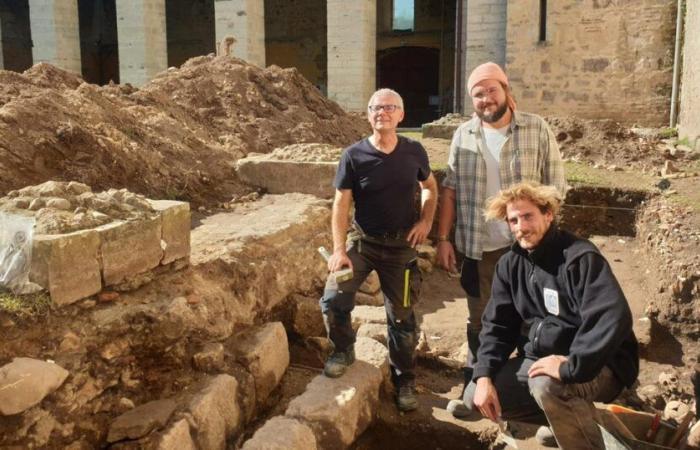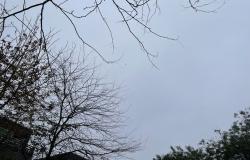Excavations at Sorde-L'Abbaye, near Peyrehorade, have uncovered a series of mosaics, revealing the presence of a rich villa of several thousand square meters.
The Gallo-Roman villa, buried beneath the grounds of the Saint-Jean de Sorde abbey in the Landes, had until then revealed only a small part of its secrets. While the excavations on the site, which ended on October 25, were supposed to make it possible to find part of an ancient cloister from thee century, archaeologists discovered the presence of a country palace. If part of it had already been identified during previous excavations, this new discovery reveals an absolutely exceptional surface.
At the level of the north gallery of the abbey's cloister – a part which had never before been excavated – Louis Lopeteguy, a doctoral student from the University of Bordeaux who is doing his thesis on the monument, first discovered a series of burials. « All the sarcophagi are lined up along a wall »explains Laurent Callegarin. This wall could be that of the medieval cloister.
“This discovery shows that the villa is much larger than we imagined. »
Simon Chassin, archaeologist participating in the excavations.
By continuing to dig a few centimeters, archaeologists unearthed a series of Roman mosaics. « They represent braids, interlacing, plant motifs, ivy and flowers typical of the Aquitaine mosaic school of late Antiquity. », explains Louis Lopeteguy to France 3. These mosaics do not belong to the medieval cloister but to the Gallo-Roman villa, part of which had already been discovered during previous excavations. « This discovery shows that the villa is much larger than imagined »specifies Simon Chassin, archaeologist participating in the excavations.
Also read
At the hermitage of La Cordelle, the Franciscan friars learned to coexist with archaeologists
The excavation project, called Sordus, brings together archaeologists, historians, architects and even geologists. Their mission is to excavate the grounds of the Saint-Jean de Sorde abbey where three historical periods followed one another and overlapped. Since the 1960s, archaeologists have already recorded the presence underground of a Gallo-Roman villa from the 3rd and 4th centuries AD. They also know that from the 10th century, a medieval monastery was established in place of the villa until the end of the Middle Ages. « The archives tell us little about the monastery. Cartularies mention the possession of the place but do not speak of its composition »explains Laurent Callegarin, professor of history and archeology at the University of Pau, who participated in the research.
Google Maps screenshot.
The first plans of the villa showed a residential space of 2000 square meters. With this find, Simon Chassin and Laurent Callegarin estimate its surface area at 6,000 square meters. « The residential part of the Gallo-Roman villa is at least 120 meters long, by approximately 50 meters wide, or at least 6 000 square meters. It is a huge aristocratic residence. » Laurent Callegarin specifies that in the apse of the current church, mosaics similar to those which have just been discovered. « We are talking about a phenomenon of nesting. They probably imitated the mosaics of the Gallo-Roman villa »he thinks.
“You have to imagine an immense aristocratic residence, with a residential part and another dedicated to the farm. These people came from the town, probably Dax, located an hour by cart »explains Laurent Callegarin. The current problem of research carried out on the site of the Saint-Jean de Sorde abbey is not intended to determine the surface area of the imposing Gallo-Roman villa. « Instead, we try to understand the superposition of buildings using 3D plans. We're going to stay a little frustrated »admits the professor.






